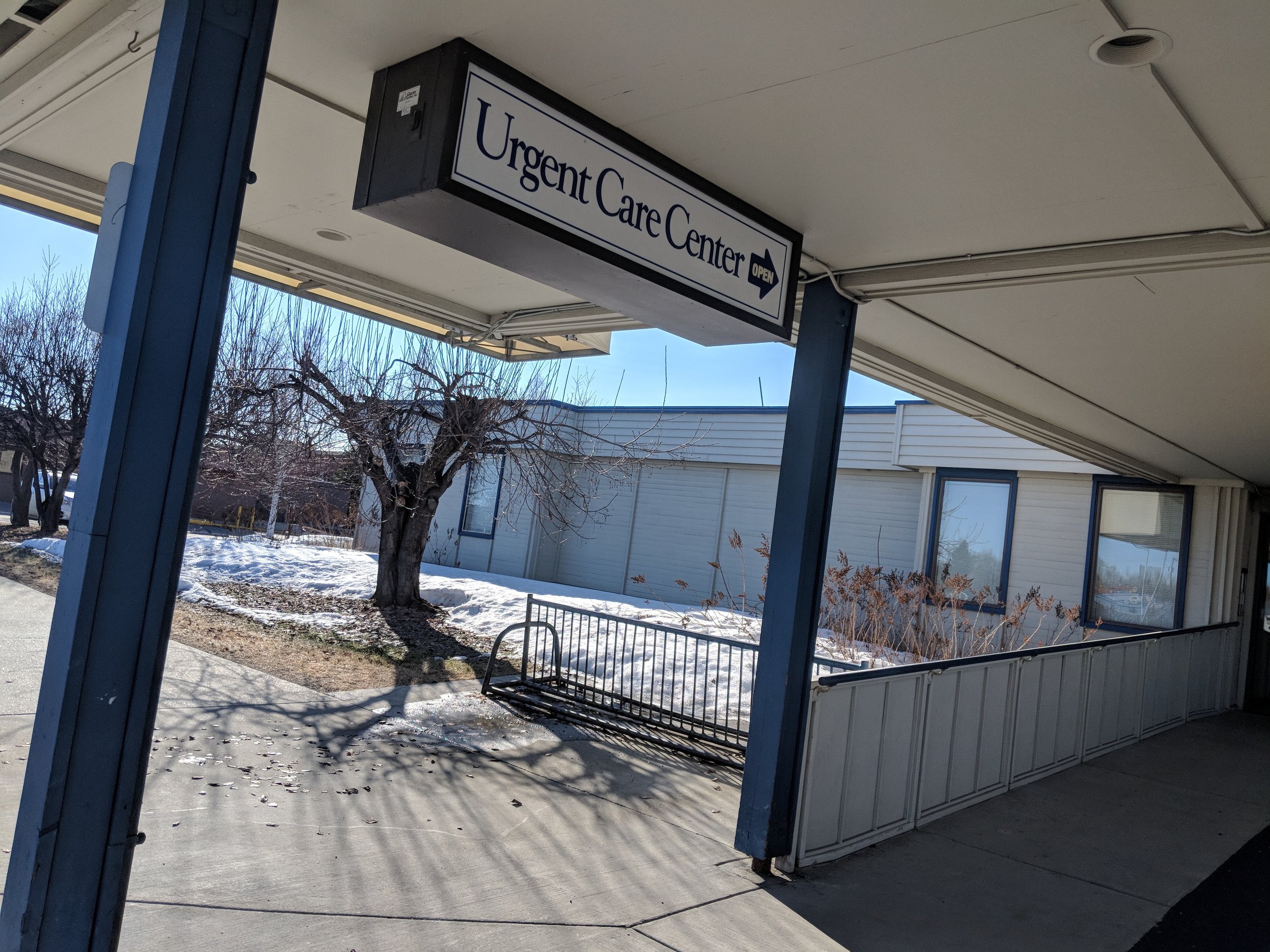If I was going to be stuck in a snowbank, it might as well have been with this view.
It was two pine trees that first caught my eye. Two trees out of thousands, with snow-capped mountains in the distance. This was going to be the first photograph I made after entering Denali National Park in Alaska. I didn't realize it would also be the last photograph of the trip.
I suppose before I go any further I should say that I wasn't seriously hurt when my leg broke through the snow and it dropped two and a half feet, although it was serious enough that I did visit urgent care the next day. I want to also say that at the time it was a laughing matter and I'm thankful that a co-worker who joined me during my scouting trip had the presence of mind to capture some photos on her cell phone.
However, that I had someone with me at all, was a rarity and why I've decided to write this post. I've written often about how when I get an opportunity to travel to a great location, I always try and build in extra days so that I can explore the area fully and make some personal photographs.
I was laughing at the absurdity of being stuck in a snow bank only three feet from the road and ten feet from my car.
That was the case on this assignment to photograph the Department of the Navy's Historically Black Colleges and Universities/Minority Institution program office's historic visit to the University of Alaska Fairbanks. When the assignment came in, I was determined that when it was over, I would visit Denali National Park, only 124 miles south. During a previous visit to Fairbanks* to photograph research on marginal ice zones over the Arctic Circle, my plans to visit Denali were changed when the C-130 aircraft I was in was diverted to Kodiak** on the last day. So this trip was finally going to give me that chance.
But this isn't a blog about making epic photographs, it's about how in almost all cases during these trips, I'm alone. Whether it is photographing the coastline in Oregon following an assignment in Portland, or climbing giant rocks in Joshua Tree National Park after several days filming at Camp Pendleton, I've never given much thought to the fact that I'm by myself in these remote locations. Often scrambling down steep embankments or climbing trails and crossing streams, in the dark, just to capture the sunrise.
To be safe and satisfy friends and loved ones, I visited urgent care Saturday morning for an x-ray on my lower leg. Results showed no break.
Injuring my leg has me thinking differently about the risks I've taken in the past. My original plan for the weekend was to borrow some snowshoes at the visitors center and do a series of short hikes. This trip was a chance to become familiar with the park and plan out those weekend hikes.
Even though it was late April, the trails and much of the park was still covered in snow. I could see this, yet still, I was only one step off the road when I broke through the snow. It happened quick.
Getting to a place in order to make great landscape photographs often means visiting remote locations. Getting off the beaten path. And I know we don't live in bubbles that involve no risk, but that doesn't mean we shouldn't take precautions. Below are just a few I'm thinking about.
The only positive thing about not being able to return to Denali over the weekend was that it gave me more time to visit some of the outstanding breweries in Fairbanks, like HooDoo.
1. Always let someone know where you will be. Better yet, let multiple people know. The hotel desk clerk, the park ranger at the visitor center and even friends and family members back home. Set a time you will make contact so that if they don't hear from you, they can alert authorities. If available, sign in (and out) of the trail log.
2. Be aware of the risks involved and understand your limits. It should go without saying that no photograph is worth risking serious injury. The older I get, the less risk I take, but I also have to understand that I can't do everything I used to do.
I'm putting on a good face even though my leg was killing me. Thank you to Sophoria for both capturing the photos of me in the snow, but also for being another voice of reason, urging me to visit urgent care, and checking in on me before catching her flight home that night.
3. Don't be afraid to ask others to join you. It can be difficult for non-photographers and photographers to travel together, but having someone along to share the experience or offer a different perspective can enhance the experience. And if you are lucky, they will also understand why you need to stay in one location for an hour waiting for the light to change.
Luckily this story ended well even if I didn't get any photographs from Denali. I'll be back and next time, I'll be sure to play it safe.
*On my last visit to Fairbanks I didn't make it to Denali, but I did capture the Northern Lights.
**And on that diverted flight to Kodiak, I was treated to an aerial view of what was then called Mt McKinley, now Mt. Denali.











